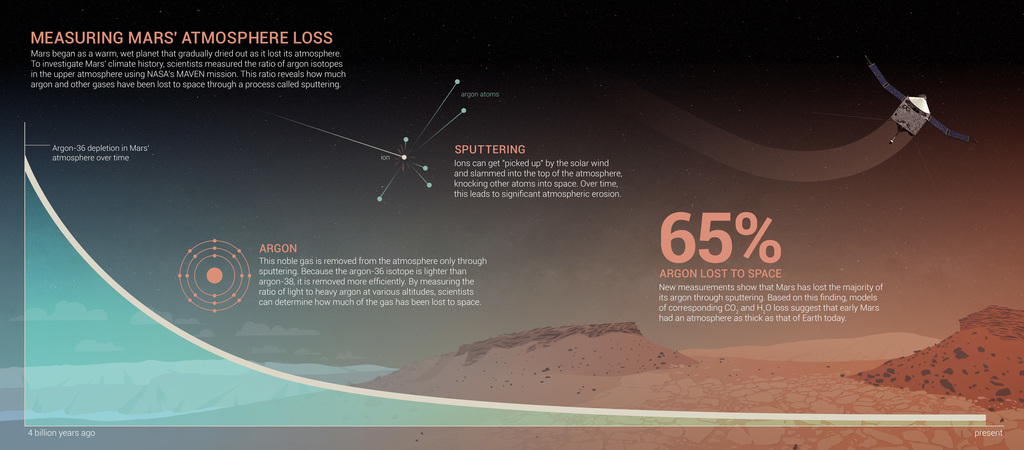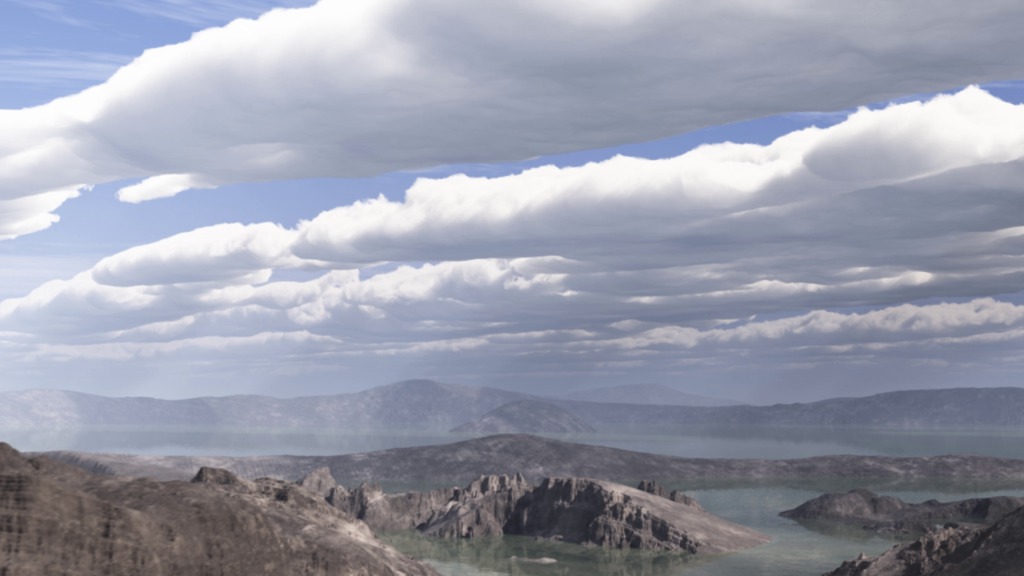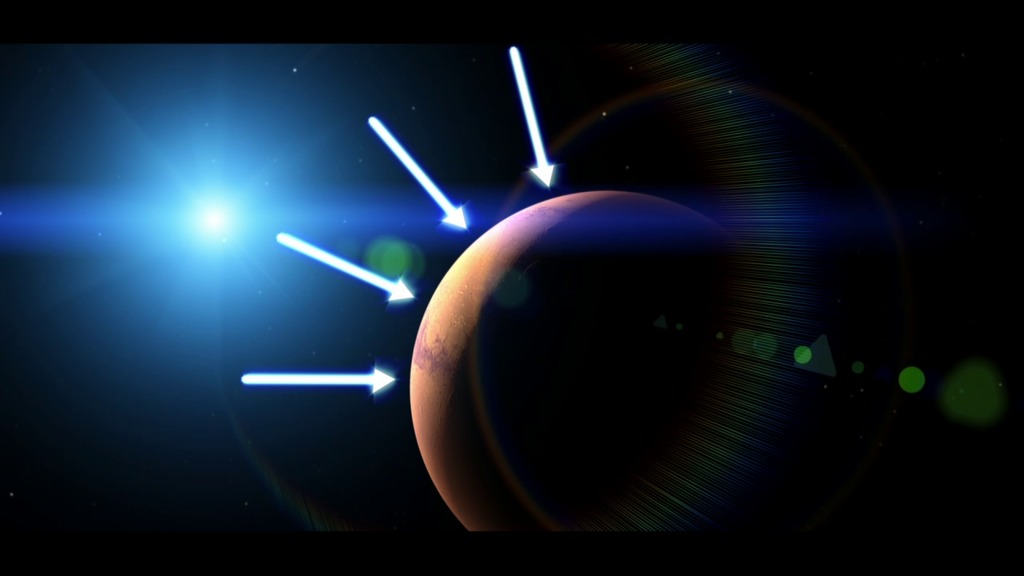Mars Evolution from Wet to Dry for Planetariums
Mars transitions from a wet planet early in its history to the dry world that we see today. This animation has been formatted for planetarium full-dome presentations, rendered for unidirectional domes in a variety of resolutions, up to 4K.
Ancient regions on Mars bear signs of abundant water - such as features resembling valleys and deltas, and minerals that only form in the presence of liquid water. Scientists think that billions of years ago, the atmosphere of Mars was much denser and warm enough to form rivers, lakes, and perhaps even oceans of water. As the planet cooled and lost its global magnetic field, the solar wind and solar storms eroded away to space a significant amount of the planet’s atmosphere, turning Mars into the cold, arid desert we see today. The goal of MAVEN is to determine how much of Mars’ atmosphere and water have been lost to space, and how these processes have changed the climate on the Red Planet over its history.

Artist concept image of an early wet Mars.
Credits
Please give credit for this item to:
The Lunar and Planetary Institute
NASA's MAVEN mission
-
Animator
- John Blackwell (LPI)
-
Producer
- John Blackwell (LPI)
-
Project support
- Christine Shupla (LPI)
- Tom Mason (LASP)
-
Technical support
- Tony Butterfield (HMNS)
- Adam Barnes (HMNS)
- Aaron E. Lepsch (ADNET Systems, Inc.)
-
Support
- Dan Gallagher (USRA)
Release date
This page was originally published on Tuesday, May 24, 2016.
This page was last updated on Wednesday, May 3, 2023 at 1:48 PM EDT.






![Learn about the “disappearance” of the solar wind at Mars that was witnessed by MAVEN – an event last seen nearly a quarter-century ago at Earth.Complete transcript available.Universal Production Music: “Space Museum” by Harry Gregson Williams [BMI], Atmosphere Music Ltd. [PRS]; “Currents and Crime Scenes” by Dylan Matthew Love and Harry Gregson Williams [BMI], Atmosphere Music Ltd. [PRS]Watch this video on the NASA Goddard YouTube channel.](/vis/a010000/a014400/a014477/MAVEN_Solar_Wind_Disappear_V4.jpg)